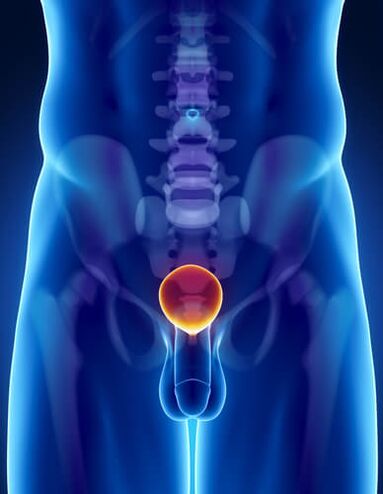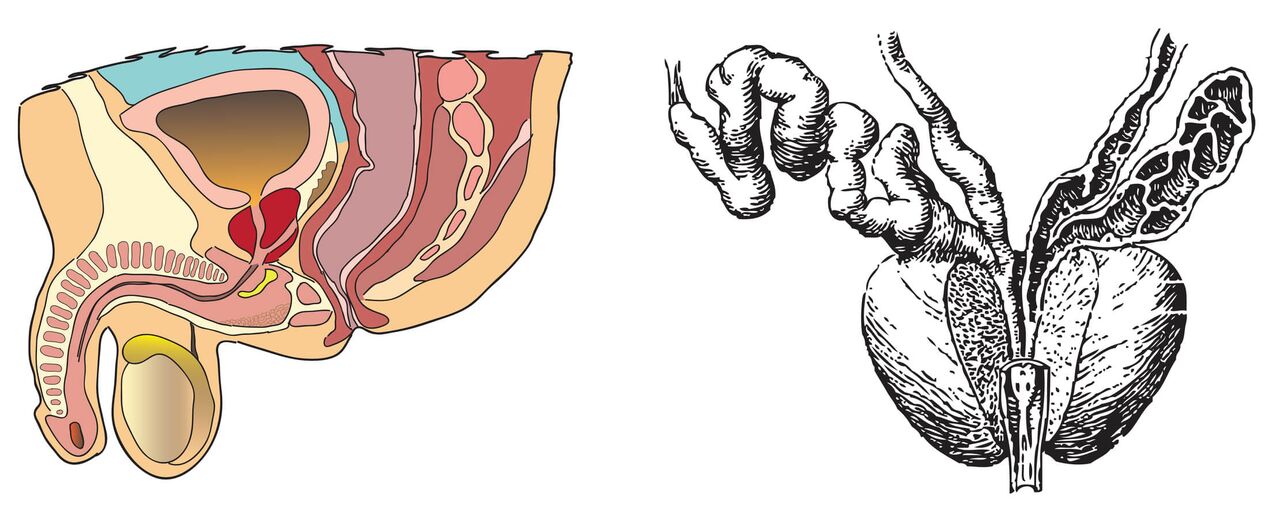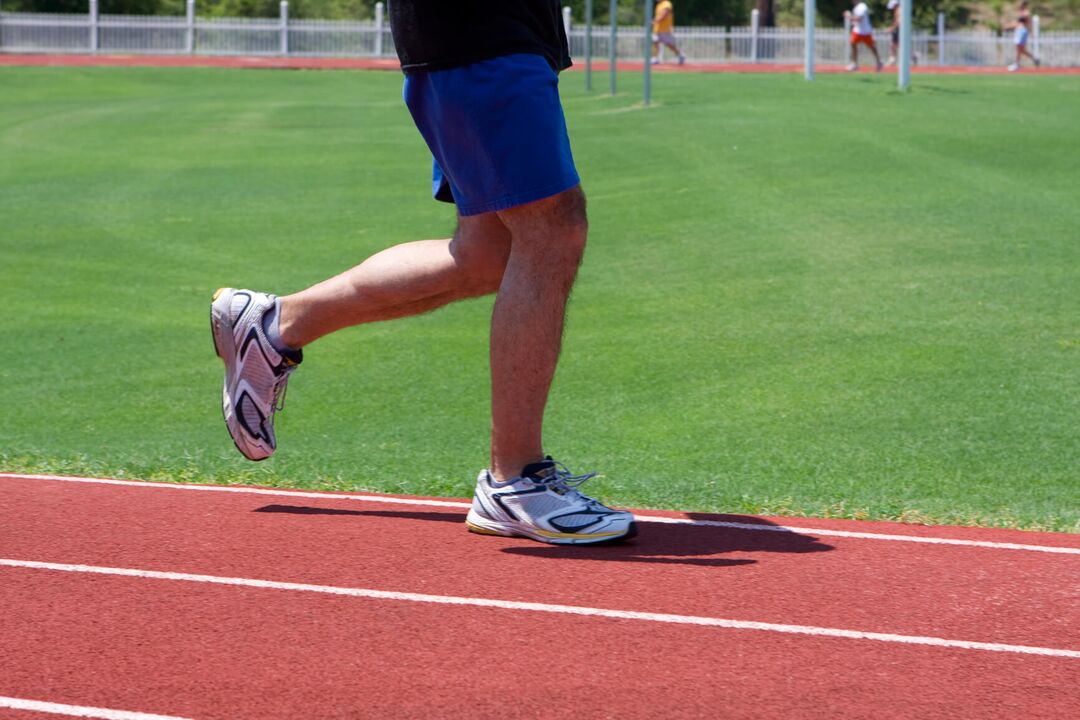
prostatitisIt is a urological disease, accompanied by inflammation of the prostate tissue. Infections spread through blood, lymph, or unprotected sex can cause damage to the prostate. Injuries and impaired blood supply to the pelvic organs, lower body temperature, slow physical activity, hormonal imbalance and other factors can promote the development of male prostatitis. Prostatitis can be accompanied by vesicular inflammation, urethritis and other infectious and inflammatory diseases of the reproductive and urinary organs.
Incidence statistics
Prostatitis is one of the most widespread diseases of the male genitourinary system in the world. According to various sources, this condition is observed in 60-80% of sexually mature men. According to official medical statistics, more than 30% of young people of childbearing age suffer from chronic prostatitis. In about one-third of cases, it occurs in men over 20 and under 40. According to the World Health Organization, urologists will diagnose chronic prostatitis in every tenth of their patients.
Causes of prostatitis
infection.Pathogenic bacteria and opportunistic bacteria enter the prostate through lymphatics and blood vessels. Secondary infections of the prostate are usually complications of inflammatory diseases of the rectum and urethra.
Type of infection:
- rise-Microbes enter the gland from the external opening of the urethra;
- down-Microorganisms enter the prostate with infected urine.
Disease-causing conditions, pathogenic microorganisms (according to the Institute of Urology 1997-1999)
| microorganism | Number of studies | |
|---|---|---|
| % | Abdominal muscles | |
| Staphylococcus epidermidis | 42. 3 | 55 |
| Staphylococcus saprophyticus | 17. 6 | twenty three |
| Staphylococcus aureus | 4. 6 | 6 |
| Streptococcus hemolyticus | 3. 1 | four |
| Ginseng | 0. 8 | One |
| Streptococcus fahrenii | 1. 5 | 2 pcs |
| Staphylococcus aureus | 3. 1 | four |
| Enterococcus faecalis | 11. 6 | fifteen |
| Streptococcus | 3. 1 | four |
| Total (gr. +) | 87. 6 | 114 |
| Pseudomonas aeruginosa | 3. 7 | Fives |
| Escherichia coli | 4. 7 | 6 |
| Enterobacter spp. | twenty three | 3 |
| Proteus | 1. 5 | 2 pcs |
| Total (gr. -) | 12. 3 | sixteen |
Weakened immunity.One of the causes of prostate inflammation is the weakening of the body's immune defense capabilities. Regular stress, unbalanced diet, overwork, smoking, and drinking can promote this condition. Due to reduced immunity, the human body is most susceptible to infection, leading to the development of prostate disease.
Imbalance of blood supply.Sedentary, sedentary lifestyle may lead to the development of chronic prostatitis. Due to the continuous lack of physical activity, the work of the endocrine, cardiovascular and nervous systems and the blood circulation of the pelvic organs are disturbed. The result is hypoxia in the prostate tissue.
Irregular sexual activity.Prolonged abstinence and excessive sexual activity may cause prostatitis. Many men who engage in sexual activity suffer from nervous fatigue, hormonal imbalance, impaired gonad secretion, and forceful disappearance. Interrupting sexual intercourse has a negative impact on the health of the prostate.
Chronic prostate injury. . . Chronic prostatitis may be caused by frequent trauma to the soft tissues of the prostate. The most common situation is in patients with professional activities related to driving. In this case, the cause of prostatitis is the constant shaking of the perineum muscles, vibration and excessive pressure.
Major syndromes of prostatitis
pain.When men suffer from prostatitis, pain and cuts in the lower abdomen and lower back, as well as pain throughout the body. Ejaculation can exacerbate this symptom, especially during sexual intercourse after prolonged abstinence.
Difficulty urinating.The typical signs of male prostatitis are frequent urination, burning and tingling when emptying the bladder, and pain after urination in the perineum. Another symptom of prostate inflammation is difficulty urinating. In the absence of disease treatment, acute urinary retention may occur.
Sexual dysfunction.For simple prostatitis, there are accelerated ejaculation, orgasm, pain during ejaculation, and partial or complete decrease in libido. Prolonged erection at night is also a symptom of chronic prostatitis.
External performance.When suffering from prostatitis, some patients have purulent or clear secretions in the urethra, most in the morning in the urethra. The patient will also notice a symptom, such as the presence of white flocs or filaments in the urine.
Types of prostatitis
Acute bacteria.Acute prostatitis is caused by infection of the prostate by Staphylococcus aureus, Escherichia coli, Enterococcus and other pathogenic bacteria. If left untreated, this disease can cause blood poisoning. In this case, the man needs to be hospitalized urgently.
Symptoms of this type of prostatitis:
- Chills and fever (38°C and above);
- Severe or straining pain in the groin, lower back and perineum;
- The desire to urinate frequently;
- Painful urination;
- Difficulty urinating and acute retention of urine;
- White or colorless secretions are discharged from the urethra.

Chronic bacteria.The recurrent form of the disease is caused by the penetration of the infection into the glands. Chronic hypothermia, long-term abstinence and delayed urination can lead to the development of prostatitis. If left untreated, chronic prostatitis can cause cystitis, because inflammation in the prostate is a reservoir of bacteria that affect the urogenital tract.
Symptoms of chronic prostatitis:
- Pain in the scrotum, lower abdomen, and perineum;
- Difficulty urinating
- Violation of effectiveness.
Chronic non-bacterial.The causes of diseases include the entry of viruses or bacteria into the prostate (tuberculosis, trichomoniasis, chlamydia), autoimmune processes, and urine penetration into the glands. Chronic prostatitis accounts for 95% of all types of prostatitis.
The signs of prostatitis are:
- Chronic pain in the pelvic area (paining the man for at least 3 months);
- Recurrent pain in the groin;
- Urine, semen and prostate secretions have no symptoms of inflammation.
Chronic asymptomatic.Asymptomatic chronic prostatitis has nothing to do with bacterial infection and symptomatic prostate syndrome. It can be assumed that the disease is a physiological characteristic related to age.
Symptoms of this type of chronic prostatitis:
- There is no major syndrome of the disease;
- The content of white blood cells and bacteria in urine increases.
The main symptom of the disease-the presence of infection in the glands-can only be detected by biopsy or during surgical procedures to treat various diseases of the prostate (adenoma, cancer).
Stagnation.Prostatitis does not only develop against the background of anatomical and physiological changes in veins and other body systems. The main cause of the disease is irregular sex life.
Signs of prostatitis:
- Pain in the perineum, radiating to the bone;
- Increased urination in the morning;
- Mild difficulty with urine flow (symptoms are observed in the chronic form of the disease);
- Weakened erection;
- Decreased libido;
- The "swelling" of orgasm during ejaculation.
Diagnosis of acute and chronic prostatitis
In order to choose the correct treatment method, the doctor prescribes a comprehensive diagnosis of the genitourinary system status, including the following methods.
Digital rectal examination.If you suspect prostatitis, the urologist will perform a digital examination. The back surface of the prostate is adjacent to the rectum, so when the finger is inserted through the anus, the doctor can determine the condition of the gland. During the research process, the size, consistency and shape, surface condition, and soreness were determined.
Signs of male prostatitis include:
- The consistency of the prostate is soft and non-elastic;
- Pain on palpation;
- Enlarged glands
- The rectal mucosa does not move on the prostate.
Ultrasound examination procedure.Before starting the treatment of acute prostatitis, an ultrasound examination of the prostate should be prescribed to identify/rule gland abscesses, and in the chronic course of the disease-identify cysts and stones in the prostate, and check the degree of prostate cancer. Pressure on the urethra. The most effective method is rectal ultrasound.
Urine flow method.This method of diagnosing prostatitis is used to study the indicators of the urination process: the duration of this physiological behavior and the speed of urine outflow. If the speed is 15 ml/s or higher, it means that the urethra is normally open. The sign of prostatitis is that the value drops below 10 ml/s. This speed is the result of poor urethral patency.
Interpretation of urinalysis results
| Urine flow rate | Explanation |
|---|---|
| >15ml/sec | Urinary tract obstruction is unlikely |
| <10ml/sec | Urethra or detrusor weakness may shrink significantly |
| 10-15ml/sec | Uncertain result |
Cystoscopy.For inspection, the endoscopic imaging system is inserted into the bladder. This method of diagnosing acute and chronic prostatitis can be used when diseases such as cancer, cystitis or bladder trauma are suspected.
Laboratory research.In order to diagnose and determine the microorganisms that cause the disease, in the presence of chronic prostatitis or acute inflammation symptoms, urine and prostate secretions are checked. An indication of the presence of pathogenic microflora is an increase in the number of white blood cells in the biological material. In order to form an effective treatment course, the type of bacteria can be determined by PCR, RIF and inoculation on nutrient media.
Interpretation of laboratory results
| The secret of the prostate | Third urine sample (after prostate massage) | |||
|---|---|---|---|---|
| HP Form | The number of white blood cells, uv. x 400 | Sowing result | The number of white blood cells, uv. x 400 | Sowing result |
| bacterial | >10 | + | The difference between the number of white blood cells in the third part of urine and the second part of urine ≥10 | + |
| Chronic pelvic pain inflammation syndrome | >10 | - | The difference between the number of white blood cells in the third part of urine and the second part of urine ≥10 | - |
| Non-inflammatory chronic pelvic pain syndrome | <10 | - | - | - |
Prevent prostatitis

physical activities.In order to prevent and treat prostate disease, men must avoid lack of exercise. Respected:
- Walking (4 kilometers or more per day);
- Exercise (squatting, jumping, bending);
- Train the muscles of the perineum and buttocks (10 times of tension and relaxation).
Proper nutrition.In order to prevent acute and chronic prostatitis, men’s diet should be rich in zinc and vitamin B foods. Suggested consumption:
- Seafood (oysters, seaweed);
- meat;
- pumpkin seeds;
- walnut;
- bran;
- Kefir
- Rye bread.
Regular sex life.When preventing and treating diseases, men need to:
- Live a rhythmic sex life;
- Avoid interruption of sexual intercourse;
- Avoid casual relationships.
Treatment of acute and chronic prostatitis
Use the following methods to treat inflammation of the prostate.
Antibacterial therapy.If prostatitis is bacteria, antibiotic treatment is needed. The doctor will select a group of drugs based on the type of microorganism that causes the disease, the pathogen's sensitivity to various drugs, and whether there are contraindications in the patient.
Drug characteristics
| drug | benefit | Disadvantage |
|---|---|---|
| Fluoroquinolones |
|
|
| Macrolides |
|
Insufficient activity against gram-negative bacteria |
| tetracycline | Fight against atypical pathogens |
|
Hormone therapy.In order to restore the normal hormonal balance between androgens and estrogen, hormone therapy is necessary. Drugs with antiandrogenic activity can reduce inflammation in glandular tissues and prevent the disease from transitioning to a more severe stage.
Prostate massage.This method of treating chronic prostatitis can only be used outside of the worsening of the condition. A man needs to take a slanted position, place his palms on the sofa or table, with his legs shoulder-width apart. The doctor performing the treatment puts on sterile gloves, then applies ointment or gel (in some cases, drugs containing anesthetics) to the index finger of the right hand, and then injects it into the rectum through the anus. Massage by applying light pressure until the secretions of the prostate are separated through the opening of the urethra. Treatment requires at least 10 massages.
physiotherapy.To treat the symptoms of prostatitis, several methods are used to normalize the pelvic area and increase blood circulation. This allows you to rule out stagnation and increase the efficiency of medication. Treatment is performed by exposing the glands to ultrasonic waves, electromagnetic vibrations, and high temperatures (micro pools with warm water).
Surgical treatment.Surgical intervention for prostate disease is rarely used. This treatment is necessary for the development of complications of acute or chronic prostatitis.
Indications for prostate surgery:
- Acute urine retention caused by severe urethral stricture;
- Abscess (suppuration on the surface of the gland);
- Glandular sclerosis;
- Adenoma that does not respond to conservative treatment.
Complications of prostatitis

Vasculitis.Untreated prostatitis can cause seminal vesiculitis. The symptoms of the disease are pain deep in the pelvis, radiating to the bones, increased erection and ejaculation, frequent urination, blood and/or pus in semen and urine.
Colitis and urethritis.Because the semen nodules are close to the excretory flow of the prostate, they are often infected and inflamed by the infected gland. If left untreated, the symptoms of prostatitis will be supplemented by the typical symptoms of urethritis-burning or itching of the urethra when urinating. Due to the convulsive contraction of the urethra, there will be pain during ejaculation.
Prostate abscess.The appearance of a purulent cavity on the surface of the gland is caused by the pathogenic bacteria that cause prostatitis. The typical symptoms of the disease are general weakness, impaired consciousness, delusion, a sharp rise in body temperature, increased sweating, and chills. Prostate abscess is a serious septic disease and must be treated in the hospital.
Prostate sclerosis.Prostatic sclerosis is a regular exacerbation of chronic prostatitis caused by non-compliance with the treatment prescribed by a urologist. This disease can develop within a few years, but if it interferes with the hormonal balance in the human body, it may develop rapidly. With prostate sclerosis, pain is observed when emptying the bladder, intermittent and slow urine flow.
The formation of cysts and stones. . . The appearance of cysts in the glands is one of the possible options for the development of chronic prostatitis. Tumor infection can cause abscesses and complicate the treatment of the disease. Single and multiple stones can also form in the prostate. In this disease, in addition to the common symptoms of chronic prostatitis, there are also urine outflow, frequent urination, and perineal pain.
Infertility.In chronic prostatitis, sperm production and motor function are impaired. If left untreated, the disease can also affect the vas deferens and seminal vesicles, preventing them from entering the sperm, so they will not be thrown into the urethra during ejaculation. As a result, men with chronic prostatitis often suffer from infertility.



























